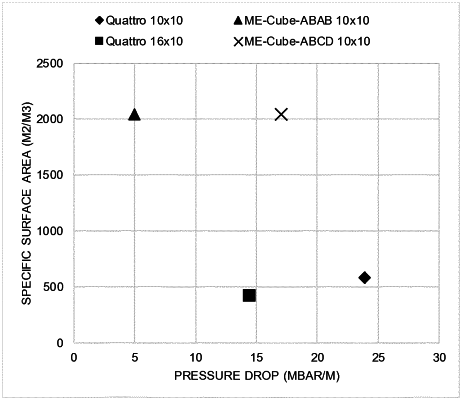| CPC B01J 21/005 (2013.01) [B01J 23/78 (2013.01); B01J 35/04 (2013.01); B01J 35/1009 (2013.01); B01J 35/1014 (2013.01); B01J 35/1019 (2013.01); B01J 37/0236 (2013.01); B82Y 30/00 (2013.01); B82Y 40/00 (2013.01)] | 18 Claims |

|
1. A method for producing a three-dimensional porous catalyst monolith of stacked catalyst fibers, comprising the following steps:
a) Preparing a suspension paste in a liquid diluent of particles of a catalyst A, which comprises at least nickel-magnesium mixed oxide and magnesium spinel and aluminum oxide hydroxide, wherein the nickel-magnesium mixed oxide has an average crystallite size of ≤100 nm, the magnesium spinel phase has an average crystallite size of ≤100 nm, the proportion of nickel in the catalyst is in the region of 30 mol %, the proportion of magnesium is in the range 8-38 mol %, and the proportion of aluminum is in the range 50-70 mol % and the intensity of the diffraction reflection of the catalyst at 43.09° 2θ is less than or equal to the intensity of the diffraction reflection at 44.82° 2θ, or of a hexaaluminate-comprising catalyst B, which comprises cobalt and at least one further metal selected from the group consisting of Ba, Sr, La, or of precursors of catalyst A or B, and which suspension can furthermore comprise 1 to 15 wt %, based on the suspension paste, of a binder material, selected from the group of organic and inorganic binders and mixtures thereof, all particles in the suspension having an average particle size in the range of from 0.5 to 500 μm,
b) extruding the paste of step a) through one or more nozzles to form fibers, and depositing the extruded fibers to form a three-dimensional porous catalyst monolith precursor,
c) drying the porous catalyst monolith precursor to remove the liquid diluent,
d) calcining the porous catalyst monolith precursor to form the porous catalyst monolith,
wherein in step b) the nozzles have a maximum diameter of from 0.5 to less than 5 mm and the three-dimensional porous catalyst monolith precursor is formed by depositing the extruded fibers in a regular, recurring stacking pattern.
|